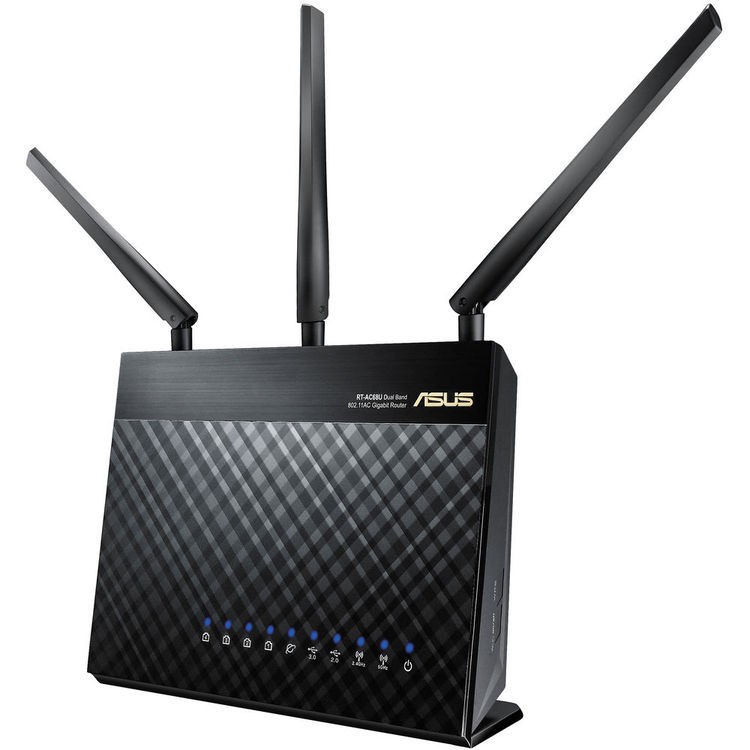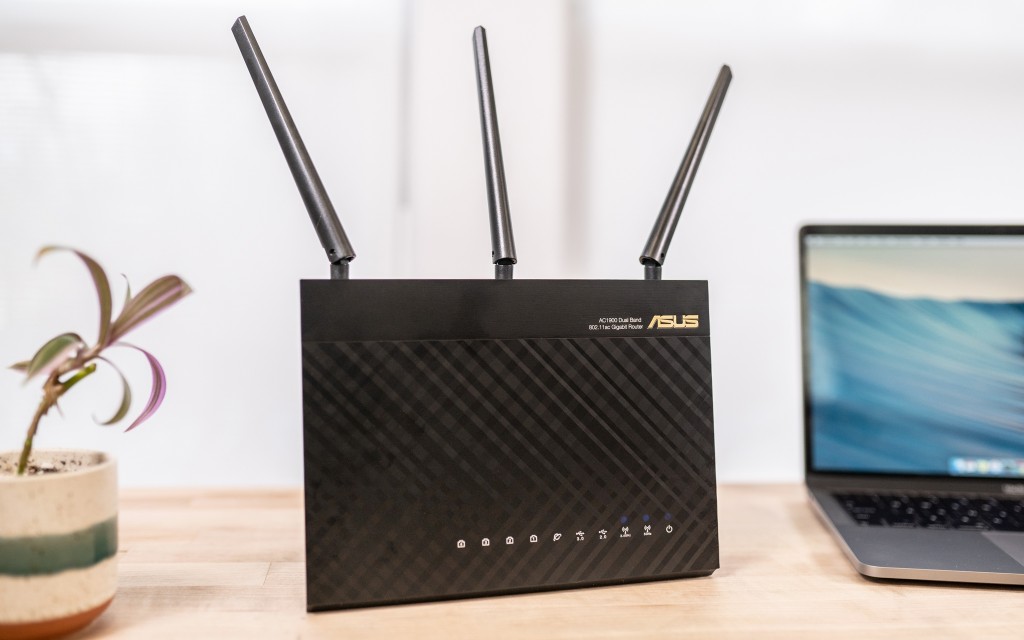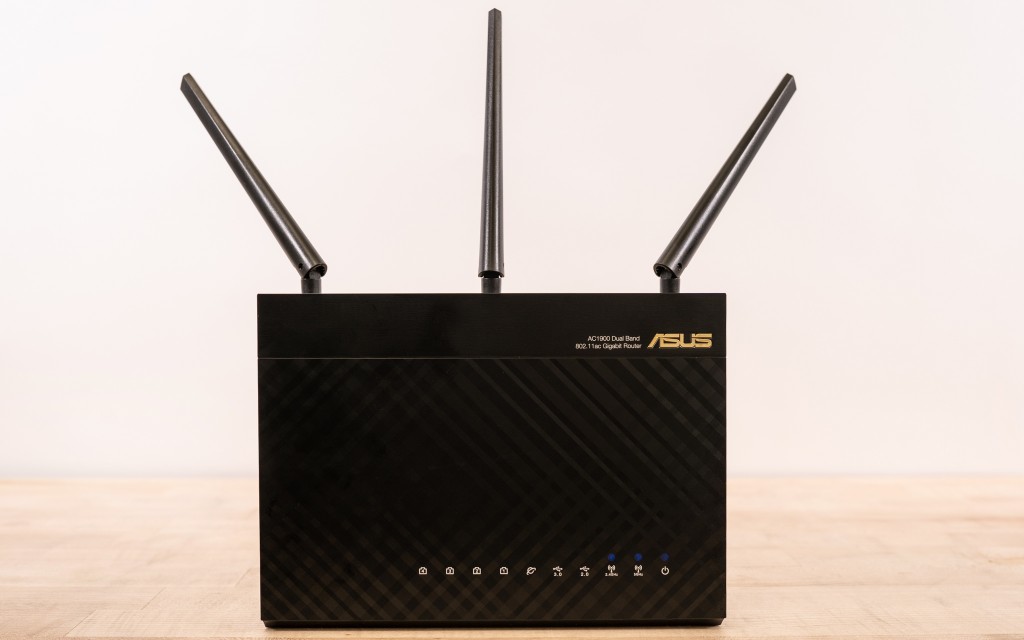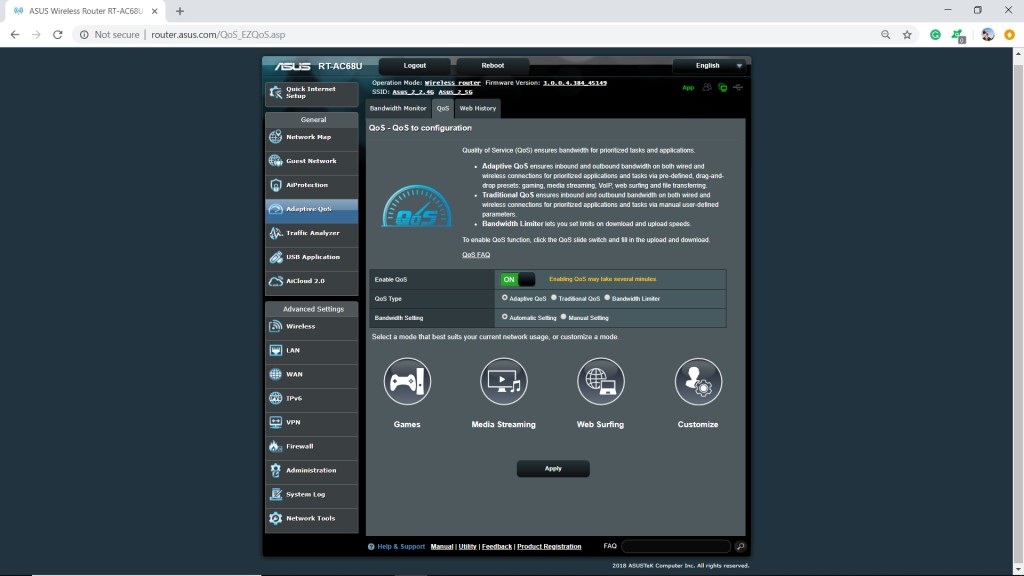ASUS RT-AC68U (AC1900) Review
Our Verdict
Our Analysis and Test Results
To pick which model is the best, we surveyed all the most popular and well-received models, then bought the ones that showed the most promise to test side-by-side. We rated each router in five weighted rating metrics, with the ASUS RT-AC68U's results described below.
Performance Comparison
Features
Responsible for a quarter of the overall score, we started off our testing process by comparing and rating all the different features and functions that these products have. We awarded points if each model has beamforming capabilities and the ability to handle MU-MIMO traffic, as well as if you can wirelessly reset the router. We also compared the number of USB and LAN ports each router has and awarded some bonus points if you can turn the LED indicator lights off. The ASUS RT-AC68U did decently well.
This router has the average number of connections — four LAN Gigabit ports and a pair of USB ports, one with the 2.0 standard and one with the 3.0 standard. We did award the ASUS RT-AC68U some final points for being able to be reset wirelessly and for allowing you to turn off the LED indicator lights if you find the network traffic indicator lights to be distracting.
This router does have beamforming abilities, letting you concentrate the signal strength in areas where you need it the most. Still, it does lack MU-MIMO ("Multi-User, Multiple-Input, Multiple-Output") technology, making this a somewhat poor choice if you have tons of different internet-connected devices in your household.
Ease of Use
Following our assessment of each router's different features, we evaluated and scored how intuitive and easy each router is to us. The ASUS RT-AC68U performed exceptionally well in this test, with one of the highest scores.
Right out of the box, this is one of the easiest wireless routers to set up. The hardest part is manually entering the IP address from the manual into a browser. Once you get to the settings page, it's super easy to set an SSID and password and set up an admin login. The interface is extremely intuitive and one of our favorites. However, we were a little bummed that we immediately had to update the router's firmware, even if we were automatically prompted.
It's also easy to set up more advanced functions, such as parental controls or Quality of Service (QoS). The content blockers are super easy to set up. We particularly liked that you can restrict pages both by the content or time, allowing you to do your best to prevent kids and teens from viewing inappropriate content or set rules like no internet after bedtime.
Additionally, you can impose these rules on specific devices, so not every device will have the internet cut off at certain times or censored. You can enable either adaptive, traditional, or bandwidth limiter QoS, prioritizing which types of internet usage you want to prioritize and whether you want to throttle back certain types of devices. The interface is also really easy to understand and use.
2.4 GHz. Throughput
Next, we tested out the data throughput capabilities of each router, both on their 2.4 GHz. and 5 GHz. networks. Each set of throughput tests account for 20% of the overall score of each router, and scores are based on averaging multiple trials of an iPerf3 test with various distances and obstructions between the router and our test computer. The ASUS RT-AC68U didn't do amazingly well in the 2.4 GHz. range.
The ASUS RT-AC68U did about average in the short distance throughput tests, having an average throughput of 45 Mbits/s in the line-of-sight test and 44 Mbit/s in the obstructed version. These tests had about 10' between the router and computer.
We had the router and the computer separated by about 35' for our medium distance test. The ASUS RT-AC68U did a little worse, having a slower than average throughput. It averaged 29 Mbits/s in the unobstructed test and 23 Mbit/s in the test with obstacles between the router and laptop.
We only did an obstructed version of our long-distance test, which separated each device by around 70'. The ASUS RT-AC68U had an average of 12.7 Mbit/s — far slower than some of the other tested products.
5 GHz. Throughput
The ASUS RT-AC68U did about the same in our 5 GHz. metric. This router got off to a bit of a rough start in terms of network connectivity, doing slightly below average in the short distance line of sight test and even worse in the obstructed version.
This router did the same in the medium-distance test with interference, only doing slightly worse than average. But it did exceptionally poorly in the line of sight test at a moderate distance, having some of the worst results of the entire group. It finished this test with a surprisingly strong performance at 5 GHz. long-distance test, doing well above average.
Range
For our final metric, we ranked each router on its effective range. We did this by seeing at what distance away from the router we began to experience YouTube buffering and playback issues on our test laptop. We separated the router and computer by around 144' before encountering severe issues, which is average for these products.
Should You Buy the ASUS RT-AC68U (AC1900)?
The ASUS RT-AC68U is a decent router — it's not amazing, but it isn't awful either.
This router might be a solid choice if you are shopping within its price range and want a product that has an intuitive settings interface and is easy to use. But we don't recommend it, favoring the slightly cheaper models that perform similarly.
What Other WiFi Routers Should You Consider?
The ASUS RT-AC68U (AC1900) isn't a great value, as a few cheaper products performed about the same. Notably, the NetGear Nighthawk AC1750 (R6700v2) — our choice for overall value — offers similar features but higher performance in terms of throughput. If you're willing to spend a little more, the award-winning ASUS RT-AC88U Wireless-AC3100 is an upgrade across the board.













